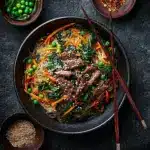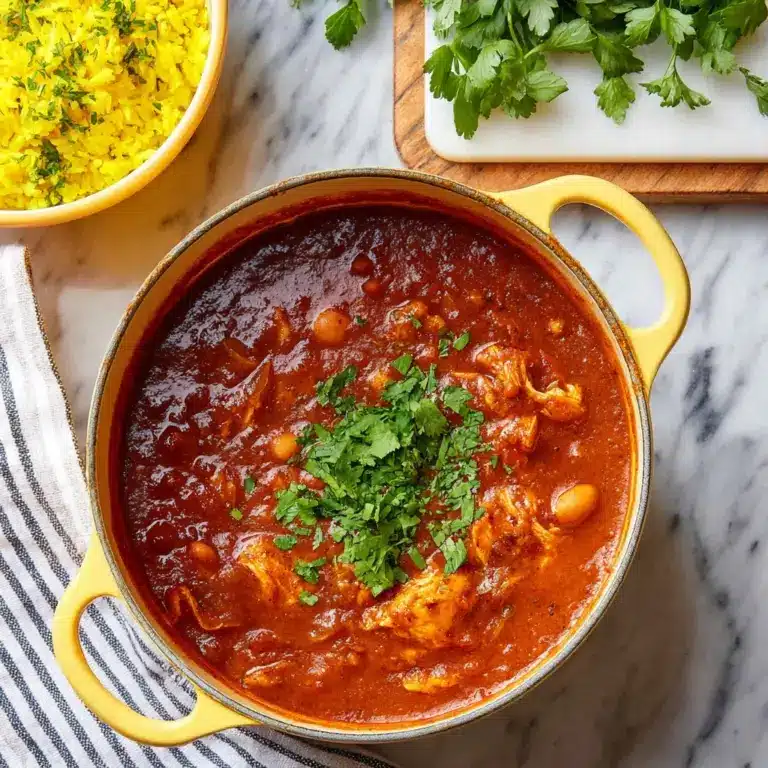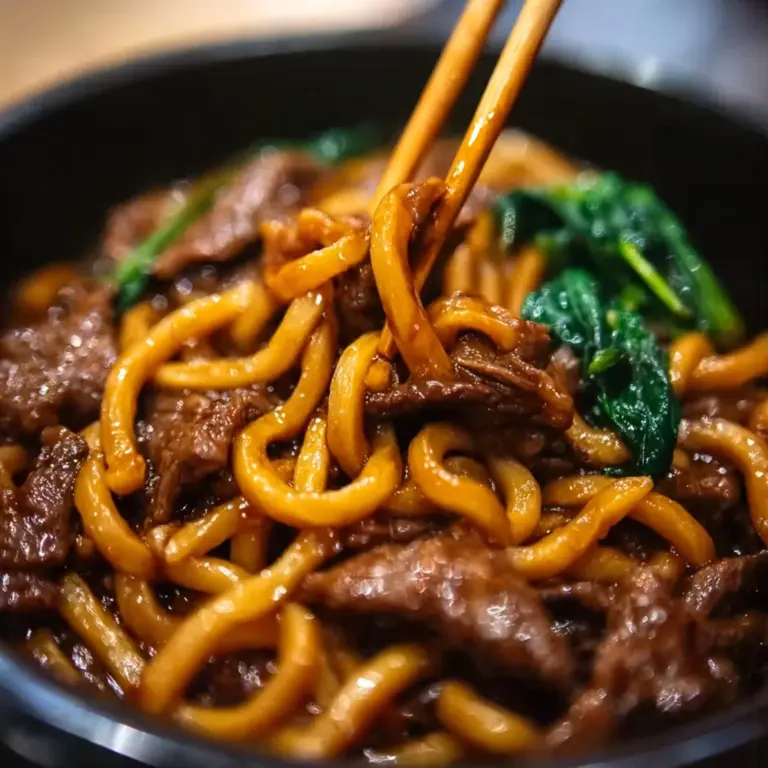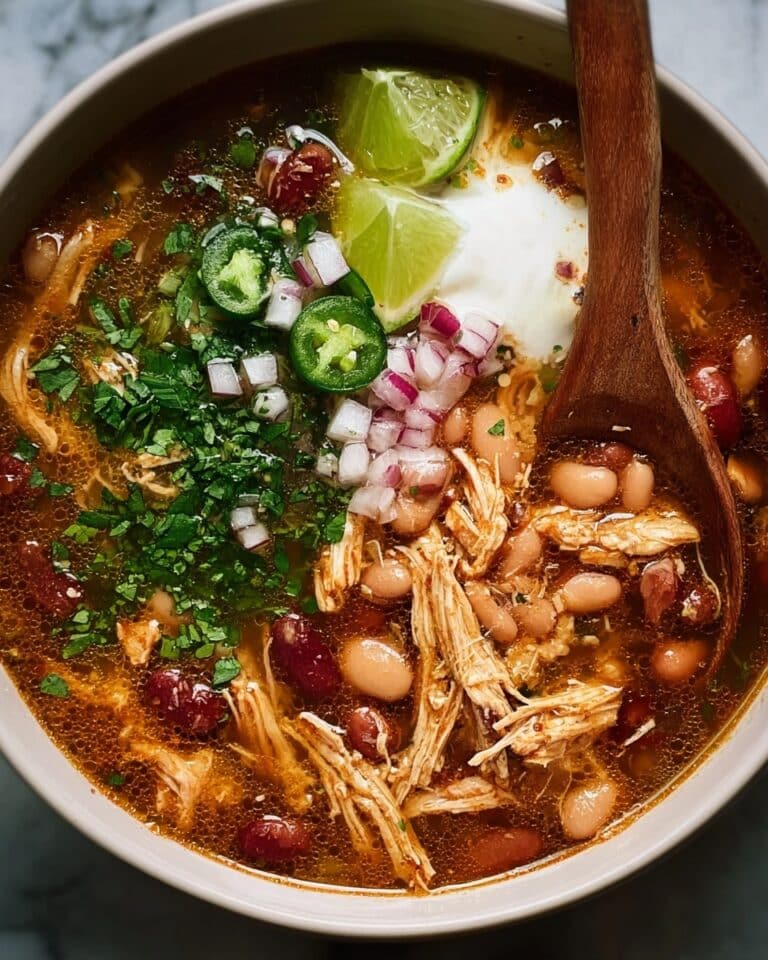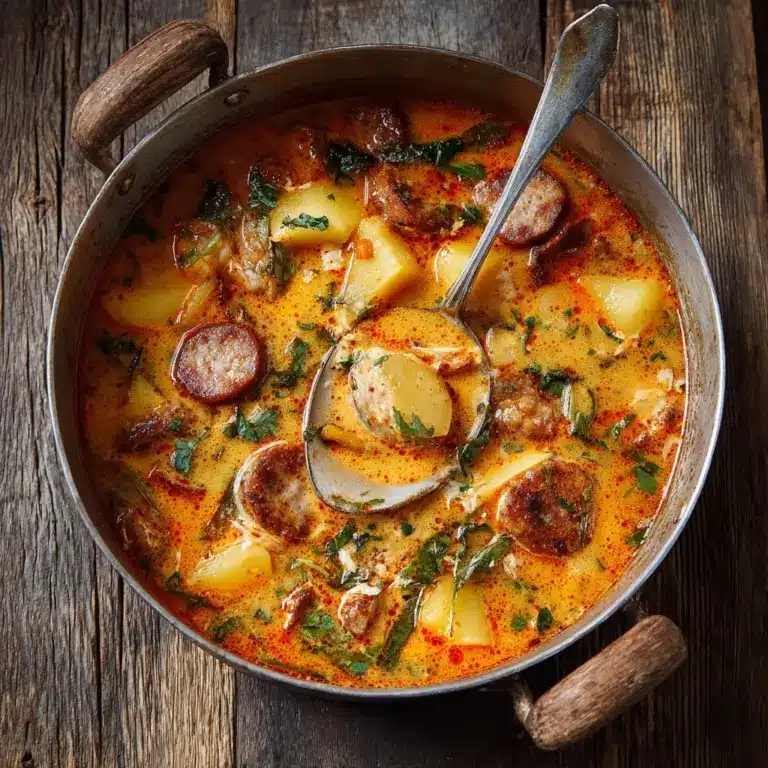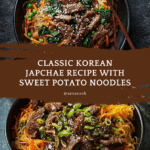Japchae Recipe
Japchae is a vibrant and irresistibly delicious Korean noodle dish that perfectly balances savory, sweet, and earthy flavors. At its heart are slippery, translucent sweet potato noodles tossed with tender beef, colorful vegetables, and a fragrant sesame-soy sauce. This crowd-pleaser not only dazzles with its beautiful presentation but also delights every palate with its harmonious blend of textures and tastes. Whether you’re already a fan or discovering Japchae for the first time, this recipe is guaranteed to become a treasured classic in your kitchen.
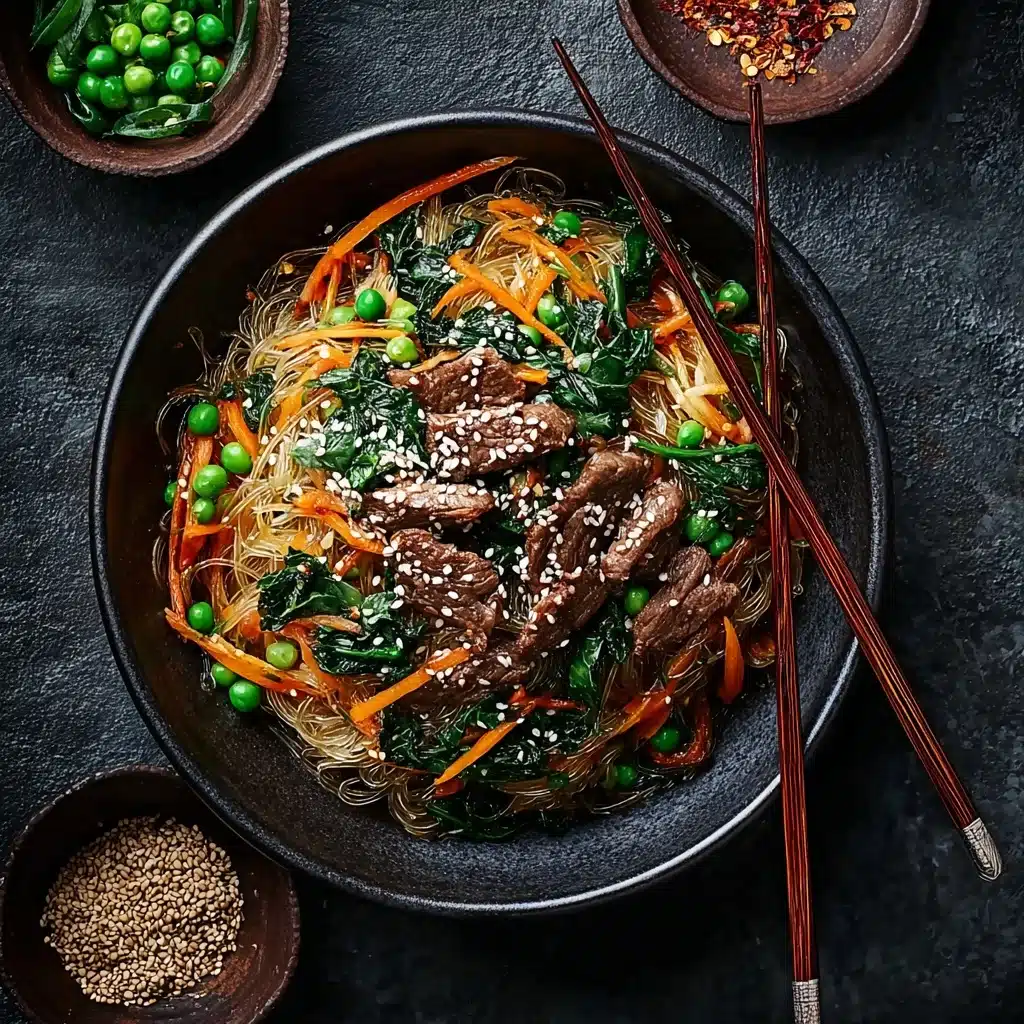
Ingredients You’ll Need
The magic of Japchae truly comes from its simple yet essential ingredients, each playing a vital role in delivering the authentic taste and gorgeous texture this dish is known for. From the chewy noodles to the fresh crunch of veggies, every element contributes to an unforgettable experience.
- Thin-sliced beef (2 lb): Use high-quality cuts like ribeye or sirloin for tenderness; can be substituted with chicken, tofu, or shrimp to suit your preference.
- Korean sweet potato noodles (1 lb): Known as glass noodles, these provide that wonderfully chewy and translucent base that makes Japchae special.
- Carrots (3 medium, julienned): Adds sweetness and a bright pop of orange for eye-catching color and texture.
- White onion (1 large, thinly sliced): Offers mild pungency and a tender bite after cooking.
- Green onions (½ bunch, chopped): Brings freshness and subtle sharpness that lifts the whole dish.
- Garlic (6 cloves, minced): Imparts deep aromatic notes for that unmistakable Korean flavor profile.
- Spinach leaves (½ lb): Adds vibrant green color and a tender leafy texture.
- Sesame oil (4 tbsp, divided): Infuses the dish with a warm, nutty aroma critical to authentic Japchae.
- Olive oil (1 tbsp): Used for sautéing to help soften vegetables and add a light fruitiness.
- Soy sauce (6 tbsp, or tamari for gluten-free): Delivers umami depth and seasoning throughout.
- Brown sugar (3 tbsp): Balances savory elements with a subtle caramelized sweetness essential for the classic Japchae flavor.
How to Make Japchae
Step 1: Cook the Sweet Potato Noodles
Start by bringing a large pot of water to a rolling boil with a drizzle of olive oil to prevent sticking. Add the Korean sweet potato noodles and let them cook gently for about 5 to 6 minutes until they’re soft yet still chewy. Once cooked, drain immediately and set aside to cool slightly—this step is crucial as these noodles form the foundation of your Japchae.
Step 2: Prepare the Beef
Next, heat a skillet over high heat and add the thinly sliced beef. As it sears, season with half of the soy sauce, half of the sesame oil, and half of the brown sugar, allowing those flavors to caramelize slightly on the meat. Cook until the beef is beautifully browned and tender to the bite. Once done, transfer it to a plate and keep warm as you work on your vegetables.
Step 3: Cook the Vegetables
In a separate skillet, warm the olive oil before adding the julienned carrots and thinly sliced white onion. Sauté until they soften and develop a lovely sweetness, then stir in the remaining soy sauce, sesame oil, and brown sugar to coat everything with flavor. Toss in the minced garlic and chopped green onions last, cooking for about one minute until their fragrance fills the kitchen.
Step 4: Wilt the Spinach and Combine
Add the fresh spinach leaves to the skillet and stir just until they wilt into a tender green blanket. Then it’s time for the grand assembly: transfer the cooked vegetables and beef into a large mixing bowl along with the noodles. Gently toss everything together to ensure the noodles are perfectly coated with sauce and evenly distributed with meat and veggies. Your Japchae is now ready to shine on the plate!
How to Serve Japchae
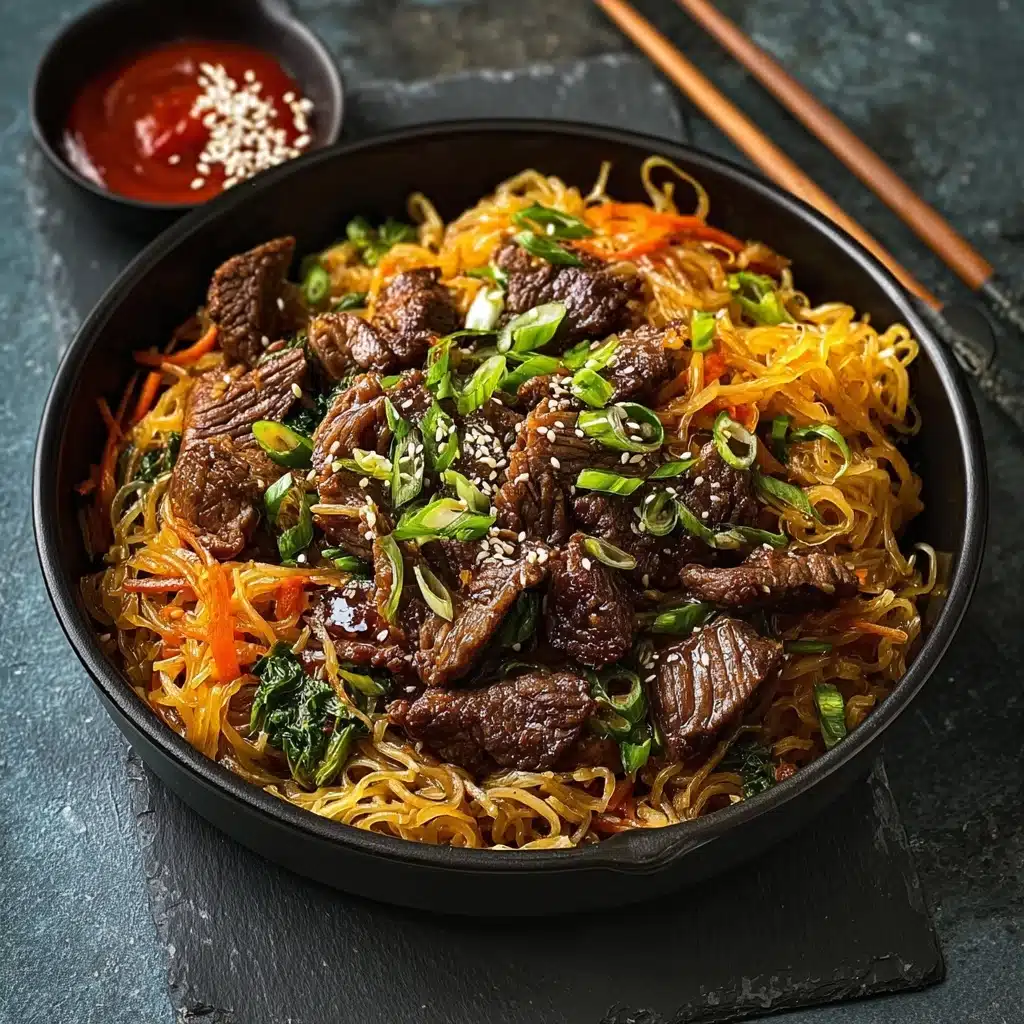
Garnishes
Garnishing Japchae elevates its beauty and flavors. A simple sprinkle of extra chopped green onions or toasted sesame seeds adds a delightful crunch and bursts of freshness. For a touch of elegance, some thinly sliced red chili peppers can add a subtle heat while making the colors pop dramatically.
Side Dishes
Japchae pairs beautifully with a variety of Korean side dishes such as kimchi for a spicy, fermented kick, or light cucumber salad to add crispness. Steamed rice and a bowl of miso soup also complement this dish well, creating a balanced and satisfying meal that feels both comforting and special.
Creative Ways to Present
Looking to impress your guests? Serve Japchae in individual lettuce cups or on a bed of crisp shredded cabbage for added crunch. Alternatively, try layering it in a clear glass bowl so the dazzling colors of noodles, vegetables, and beef show through—making the dish almost too pretty to eat. It’s a feast for the eyes as well as the taste buds.
Make Ahead and Storage
Storing Leftovers
Japchae keeps well in the refrigerator for up to 3 days when stored in an airtight container. The noodles may soak up some sauce overnight, which deepens the flavor but can change the texture slightly. Before enjoying leftovers, give it a quick toss to redistribute the sauce evenly.
Freezing
While Japchae tastes best fresh, you can freeze leftovers for up to one month. Make sure to portion it out and seal tightly to prevent freezer burn. When thawed, some moisture may separate, but gentle reheating and stirring will bring it back to life nicely.
Reheating
To reheat Japchae, warm it gently in a skillet over medium heat with a splash of water or sesame oil to revive the noodles’ softness without drying out the beef and vegetables. Avoid microwaving if possible, as this can make the noodles rubbery and unevenly heated.
FAQs
Can I make Japchae vegetarian?
Absolutely! Simply omit the beef and substitute with tofu or additional vegetables like mushrooms and bell peppers. Using a gluten-free soy sauce also makes it suitable for various dietary needs.
What are Korean sweet potato noodles?
These translucent noodles, also known as dangmyeon, are made from sweet potato starch and have a unique chewy texture that holds up well in stir-fries like Japchae.
Is Japchae usually served hot or cold?
Japchae is versatile—it can be enjoyed warm straight from the pan or at room temperature, making it popular for picnics and potlucks as well.
Can I prep ingredients ahead of time?
Definitely! You can julienne vegetables, slice meat, and even pre-cook noodles a day before. Just keep everything refrigerated separately and combine when ready to serve for best texture.
What makes Japchae different from other noodle dishes?
Japchae’s signature lies in its use of chewy glutinous sweet potato noodles combined with the perfect balance of savory, sweet, and nutty flavors, along with a colorful variety of fresh vegetables and tender meat.
Final Thoughts
Now that you have this detailed Japchae recipe, I truly hope you give it a try and fall in love with its beautiful harmony of flavors and textures. It’s a dish that brings joy both in making and sharing—with every batch feeling like a warm hug from Korean culinary traditions straight to your table.
PrintJapchae Recipe
Japchae is a classic Korean dish featuring stir-fried glass noodles with savory beef and a colorful array of vegetables, all coated in a sweet and savory sesame-soy sauce. This recipe combines tender thinly sliced beef, sweet potato noodles, and fresh vegetables for a flavorful and satisfying meal that can be easily customized with chicken, tofu, or shrimp.
- Prep Time: 20 minutes
- Cook Time: 15 minutes
- Total Time: 35 minutes
- Yield: 6 servings 1x
- Category: Main Course
- Method: Stir-frying
- Cuisine: Korean
- Diet: Halal
Ingredients
Protein
- 2 lb thin-sliced beef (or chicken, tofu, or shrimp as substitutes)
Noodles
- 1 lb Korean sweet potato noodles (glass noodles)
Vegetables
- 3 medium carrots, julienned
- 1 large white onion, thinly sliced
- 1/2 bunch green onions, chopped
- 1/2 lb spinach leaves
- 6 garlic cloves, minced
Oils and Sauces
- 4 tbsp sesame oil (divided)
- 1 tbsp olive oil
- 6 tbsp soy sauce (or tamari for gluten-free)
- 3 tbsp brown sugar
Instructions
- Cook Noodles: Bring a large pot of water to a boil with a drizzle of olive oil. Add the sweet potato noodles and cook for 5-6 minutes until tender but chewy. Drain the noodles and set them aside.
- Prepare the Beef: Heat a skillet over high heat and cook the thinly sliced beef until it browns evenly. While cooking, season the beef with half of the soy sauce, half of the sesame oil, and half of the brown sugar. Once cooked, remove from heat and set aside.
- Sauté Vegetables: In another skillet, heat olive oil over medium-high heat. Add julienned carrots and thinly sliced onions, cooking until they become soft and slightly caramelized. Add the remaining soy sauce, sesame oil, and brown sugar to the vegetables, mixing well. Stir in the minced garlic and chopped green onions, cooking for another minute to release their flavors.
- Wilt Spinach: Add the spinach leaves to the skillet and stir until they wilt completely, about 1-2 minutes.
- Combine Ingredients: In a large mixing bowl, combine the cooked noodles, sautéed vegetables, wilted spinach, and browned beef. Toss all ingredients thoroughly to evenly distribute the sauce and flavors.
- Serve: Serve the japchae warm, optionally garnishing with extra chopped green onions for added color and freshness.
Notes
- For a vegetarian version, substitute beef with firm tofu and use tamari to keep it gluten-free.
- Be sure not to overcook the sweet potato noodles; they should remain chewy.
- Adjust soy sauce and brown sugar levels to taste if you prefer a sweeter or saltier flavor.
- Garnishing with toasted sesame seeds adds crunch and enhances nuttiness.
- This dish is best served fresh but can be refrigerated and gently reheated.
Nutrition
- Serving Size: 1 cup (approximately 190g)
- Calories: 320 kcal
- Sugar: 8 g
- Sodium: 700 mg
- Fat: 12 g
- Saturated Fat: 2.5 g
- Unsaturated Fat: 8 g
- Trans Fat: 0 g
- Carbohydrates: 38 g
- Fiber: 3 g
- Protein: 22 g
- Cholesterol: 55 mg
Keywords: Japchae, Korean glass noodles, stir-fry, beef japchae, sweet potato noodles, Korean recipe, sesame soy sauce noodles

